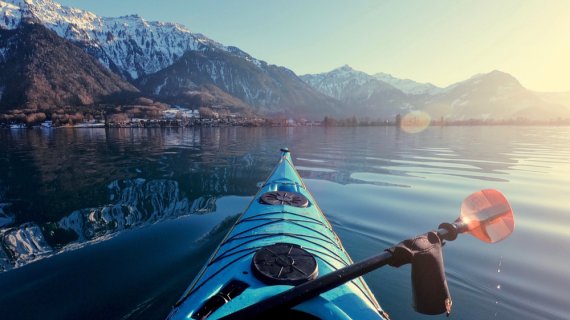Mountains often offer extraordinary motifs for hobby photographers. But behind a phenomenal picture there is often more than that. In the second part of our series, photo professional Franz Sußbauer gives valuable tips for mystical mountain pictures and explains what a good photographer has in common with the goalkeeper of FC Bayern.
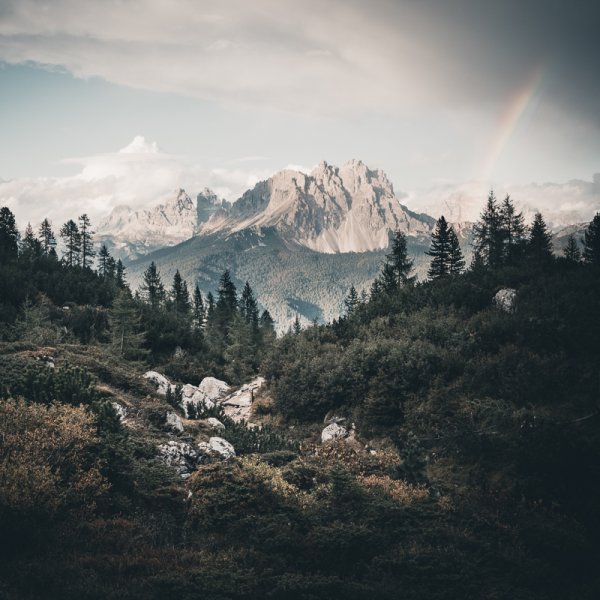
Mystical and mysterious - this is how breathtaking mountain pictures are created.
Franz Sußbauer is actually an architect. With his photos he has meanwhile become a semi-professional, with exhibitions and awards at international photo competitions. He started out like any hobby photographer: for the fun of the (outdoor) motif.
In our photo series, he reveals his best tips for different subjects and situations when photographing. The topic of this article: The perfect camera settings for mystical mountain pictures. Three example pictures have been selected for OutDoor Society.
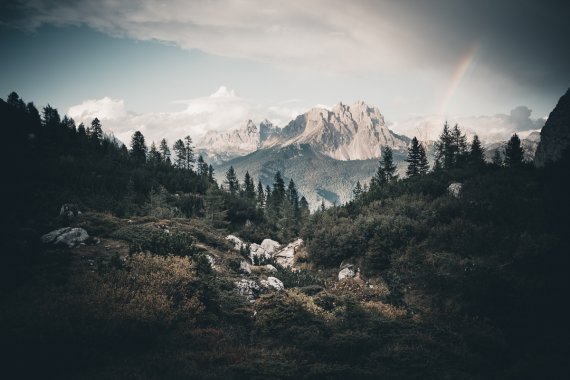
The subject:
Wild weather, rain showers, a rainbow, lots of light and lots of shade at the same time. With this photo some things happen in the foreground. This leads to the picture developing into depth. For this picture Sußbauer was on the road for a while. "You always have to wait for the right moment and then see or recognize it," he says. Then it's time to have the camera ready with the right settings: "It's like being a goalkeeper at FC Bayern. You have nothing to do for a long time, but suddenly you have to be fast and react correctly," he explains.
The settings:
In his opinion, the picture is basically not difficult to photograph. The selected aperture value for the image is f8. The selected aperture creates a large depth of field in the image: "This means that, depending on the focal length and focus distance, I have a depth of field in the image towards infinity. If, for example, you focus with a focal length of 32 millimeters and f8 at a distance of at least 6.77 meters, you get a sharpness of about 3.5 meters to infinity."
Sußbauer focused on the stones in the foreground, which made the whole picture sharp. Due to the exposure time of 1/125 seconds he was able to take the pictures well even without a tripod.
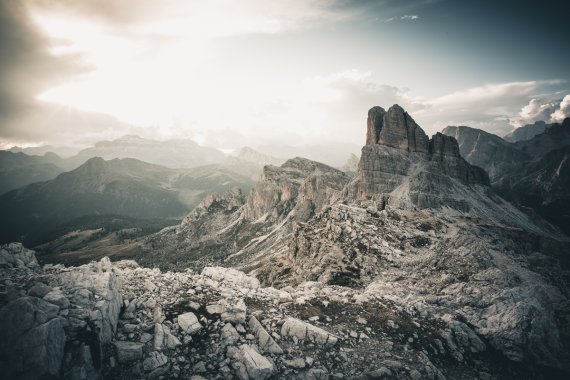
The subject:
The focus of the second photo is the same as in the first, from the foreground to the background..
The settings:
In order to achieve this, Sußbauer had to choose a higher aperture setting, since the foreground was only about 2 to 3 meters away from him, but should also be sharp. So at 24 millimeters he chose the focal length f16 and 1/6 seconds exposure time. With this exposure time, a tripod is mandatory for a sharp image.
Sußbauer has a rule of thumb for photographers:
Focal length Exposure time = 1/ (2 x focal length)
Example:
If the focal length is 80 millimeters, the exposure time should be 1/160 second or shorter so that the image is not blurred.
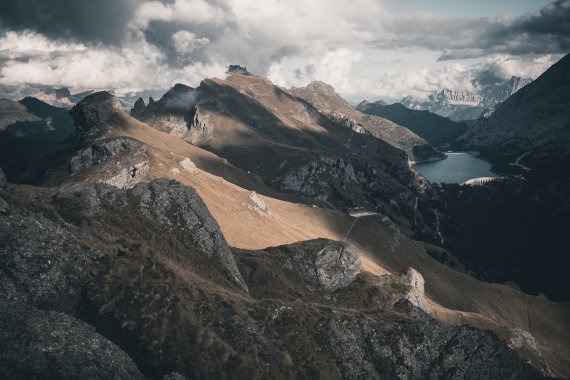
The subject:
The third picture is brought to life by the striking cloud atmosphere. The composition of the picture leads the view on the sunlit mountain slopes into the depth towards the reservoir. The play of light and shadow through the clouds adds tension and depth to the picture.
The settings:
f8, 1/160 second, 35 millimeters - the focus is on the front rock edge with a good light-shadow contrast. The rock edge was about 10 meters away from Sußbauer.
In a table Sußbauer explains which combinations of set focal length and aperture are perfect for which distance. The specified distance is the distance from which the image is sharp to infinite distance. The technical term for this distance is Hyperfocal distance.
| Aperture f2.8 | Aperture f4.0 | Aperture f5.6 | Aperture f8.0 | Aperture f11.0 | Aperture f16.0 | |
|---|---|---|---|---|---|---|
| Focal length 16 mm | 4,78 m | 3,38 m | 2,40 m | 1,70 m | 1,21 m | 0,86 m |
| Focal length 24 mm | 10,74 m | 7,60 m | 5,38 m | 3,81 m | 2,70 m | 1,92 m |
| Focal length 35 mm | 22,83 m | 16,15 m | 11,43 m | 8,09 m | 5,73 m | 4,06 m |
| Focal length 50 mm | 46,57 m | 32,94 m | 23,31 m | 16,50 m | 11,68 m | 8,27 m |
Apps like HyperFocal Pro or FotoTool help you find the best settings for each subject. Sußbauer also recommends the PhotoPills app, which calculates the position of the sun, moon and milky way for every location at any time, making it the perfect guide to the right photo moment.
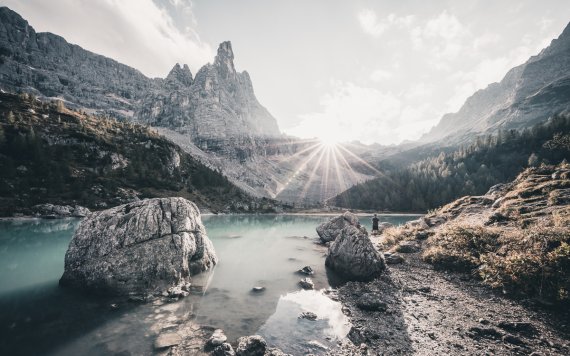
On the picture you can see Lago Sorapis. For this image Sußbauer also paid attention to the depth of field to have the boulders and mountain range sharp in the picture. This picture also shows a sun star. The perfect settings for this follow in the third part of our series.
